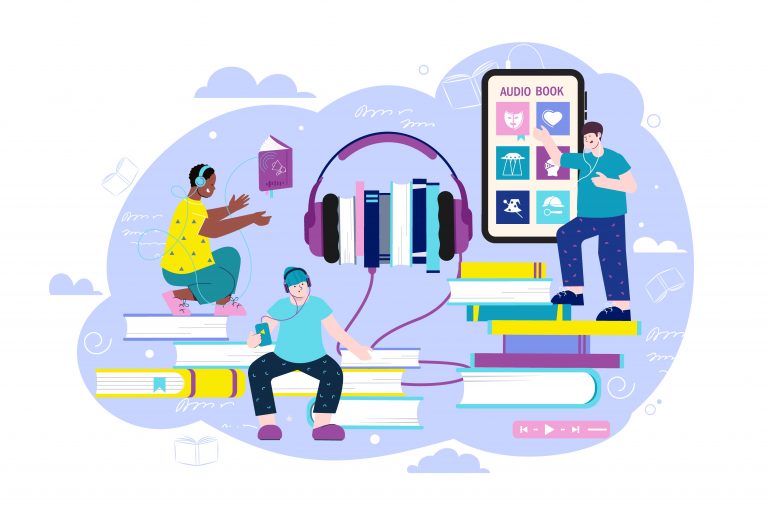

Introduction:
Yet again the domain of Learning and Development, technology continues to revolutionize the way we acquire knowledge and improve our skills. One transformative technology that plays a crucial role in this domain is Text to Speech (TTS). The technology converts written text or words into spoken language, TTS has greatly enhanced the learning experience for learners and additionally empowers educators alike.
Understanding Text to Speech:
Text to Speech (TTS) is a technology that converts written text into synthesized speech. Through sophisticated algorithms and linguistic processing, TTS analyzes and interprets written text, generating high-quality and natural-sounding spoken output. The technology even takes into considerations the grammar ensuring that the audio ouputs don’t sound Robotic like the output from few years back.
Impact on Learning and Development:
TTS serves as a powerful tool for improving accessibility, facilitating language learning, and enhancing overall learning experiences.
- Accessibility: TTS promotes inclusivity by enabling individuals with visual impairments or reading difficulties to access written content. By converting text into speech, TTS allows learners to engage with digital materials, including books, articles, and online resources, using auditory channels. It breaks down barriers, offering equal opportunities for individuals with diverse learning needs.
- Language Learning: TTS technology plays a vital role in language learning and pronunciation practice. Learners can listen to accurate pronunciation models and mimic native speakers, improving their speaking skills and developing authentic accents. Additionally, TTS assists learners in building vocabulary, comprehension, and listening skills, fostering a more immersive and interactive language learning experience.
- Reading Support: TTS serves as a valuable reading support tool for learners with reading difficulties, such as dyslexia. By simultaneously highlighting the text while reading it aloud, TTS reinforces word recognition, improves reading fluency, and enhances overall reading comprehension. It helps learners overcome challenges related to decoding, tracking, and processing written text.
- Multimodal Learning: TTS facilitates multimodal learning experiences by combining visual and auditory channels. Learners can follow along with the spoken text while reading along visually, reinforcing reading skills and comprehension. This integration of multiple senses enhances memory retention, engagement, and understanding of the material.
Empowering Educators and Learners:
Text to Speech technology empowers both educators and learners in various ways.
- Instructional Support: Educators can utilize TTS to enhance instructional materials by converting text-based content, such as presentations, worksheets, and instructional texts, into spoken language. This supports learners with diverse needs, ensuring access to information and enhancing engagement.
- Personalized Learning: TTS technology enables personalized learning experiences by allowing learners to control the pace and mode of information delivery. Learners can adjust the speed, volume, and pitch of the synthesized speech to suit their preferences, promoting individualized and self-paced learning.
- Content Adaptation: TTS facilitates content adaptation for learners with different learning styles or preferences. It allows learners to switch between reading and listening modes, catering to their individual strengths and optimizing their comprehension and retention of information.
- Accessibility Tools: TTS can be integrated into assistive technologies, such as screen readers, to enable individuals with visual impairments or print disabilities to access digital content. It enhances the accessibility of digital platforms, including e-books, online articles, and learning management systems, promoting inclusive education and participation.
Conclusion:
Text to Speech technology has become an essential component of modern learning and development empowering Learners and Educators alike and ensuring the RoI on the trainings imparted are well received for any organizations.
Skolarli leverages TTS and makes the automatically available to Learners and Educators, we leverage Microsoft’s Azure Speech services for the same. To know more about how we can assist your organizations training or learning and development program, please reach out to us at [email protected]
Image Courtesy: macrovectorThe adjascent audio file reads out the below written paragraph.
Yesterday I saw a film titled Macbeth. Its story elements are interesting. The film’s hero, Macbeth, assassinates Duncan and ascends to the throne of Scotland. But he is dissatisfied. He finds himself in a dangerous situation. He executes those he suspects of plotting against him. Eventually, some of the Lords revolted and dethroned him and killed him. The message it conveys is that excessive ambition destroys a man. The actor and actress, who played Macbeth and Lady Macbeth, had exceptional performances, which significantly increased the film’s impact.
For the illustration, the above audio has been created using Skolarli TTS engine part of SKAI